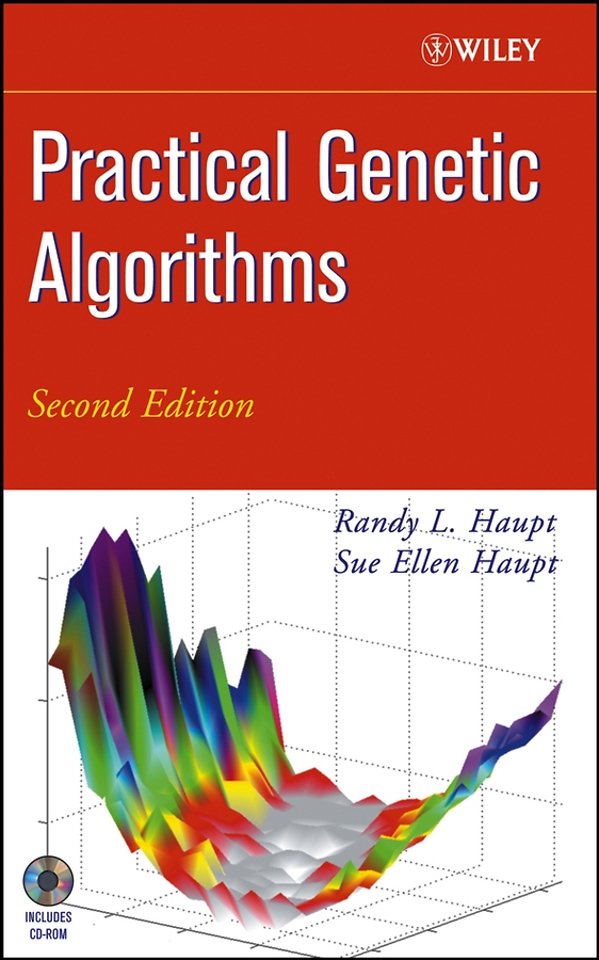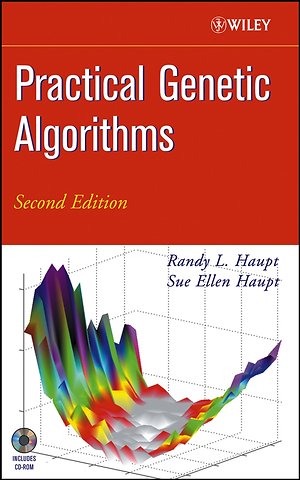Practical Genetic Algorithms 2e +CD Website
Samenvatting
∗ This book deals with the fundamentals of genetic algorithms and their applications in a variety of different areas of engineering and science
∗ Most significant update to the second edition is the MATLAB codes that accompany the text
∗ Provides a thorough discussion of hybrid genetic algorithms
∗ Features more examples than first edition
Specificaties
Inhoudsopgave
<p>Preface to First Edition.</p>
<p>List of Symbols.</p>
<p>1. Introduction to Optimization.</p>
<p>1.1 Finding the Best Solution.</p>
<p>1.2 Minimum–Seeking Algorithms.</p>
<p>1.3 Natural Optimization Methods.</p>
<p>1.4 Biological Optimization: Natural Selection.</p>
<p>1.5 The Genetic Algorithm.</p>
<p>2. The Binary Genetic Algorithm.</p>
<p>2.1 Genetic Algorithms: Natural Selection on a Computer.</p>
<p>2.2 Components of a Binary Genetic Algorithm.</p>
<p>2.3 A Parting Look.</p>
<p>3. The Continuous Genetic Algorithm.</p>
<p>3.1 Components of a Continuous Genetic Algorithm.</p>
<p>3.2 A Parting Look.</p>
<p>4. Basic Applications.</p>
<p>4.1 "Mary Had a Little Lamb".</p>
<p>4.2 Algorithmic Creativity–Genetic Art.</p>
<p>4.3 Word Guess.</p>
<p>4.4 Locating an Emergency Response Unit.</p>
<p>4.5 Antenna Array Design.</p>
<p>4.6 The Evolution of Horses.</p>
<p>4.7 Summary.</p>
<p>5. An Added Level of Sophistication.</p>
<p>5.1 Handling Expensive Cost Functions.</p>
<p>5.2 Multiple Objective Optimization.</p>
<p>5.3 Hybrid GA.</p>
<p>5.4 Gray Codes.</p>
<p>5.5 Gene Size.</p>
<p>5.6 Convergence.</p>
<p>5.7 Alternative Crossovers for Binary GAs.</p>
<p>5.8 Population.</p>
<p>5.9 Mutation.</p>
<p>5.10 Permutation Problems.</p>
<p>5.11 Selling GA Parameters.</p>
<p>5.12 Continuous versus Binary GA.</p>
<p>5.13 Messy Genetic Algorithms.</p>
<p>5.14 Parallel Genetic Algorithms.</p>
<p>6. Advanced Applications.</p>
<p>6.1 Traveling Salespersons Problem.</p>
<p>6.2 Locating an Emergency Response Unit Revisited.</p>
<p>6.3 Decoding a Secret Message.</p>
<p>6.4 Robot Trajectory Planning.</p>
<p>6.5 Stealth Design.</p>
<p>6.6 Building Dynamical Inverse Models–The Linear Case.</p>
<p>6.7 Building Dynamical Inverse Models–The Nonlinear Case.</p>
<p>6.8 Combining GAs with Simulations–Air Pollution Receptor Modeling.</p>
<p>6.9 Combining Methods Neural Nets with GAs.</p>
<p>6.10 Solving High–Order Nonlinear Partial Differential Equations.</p>
<p>7. More Natural Optimization Algorithms.</p>
<p>7.1 Simulated Annealing.</p>
<p>7.2 Particle Swarm Optimization (PSO).</p>
<p>7.3 Ant Colony Optimization (ACO).</p>
<p>7.4 Genetic Programming (GP).</p>
<p>7.5 Cultural Algorithms.</p>
<p>7.6 Evolutionary Strategies.</p>
<p>7.7 The Future of Genetic Algorithms.</p>
<p>Appendix I: Test Functions.</p>
<p>Appendix II: MATLAB Code.</p>
<p>Appendix III. High–Performance Fortran Code.</p>
<p>Glossary.</p>
<p>Index.</p>

